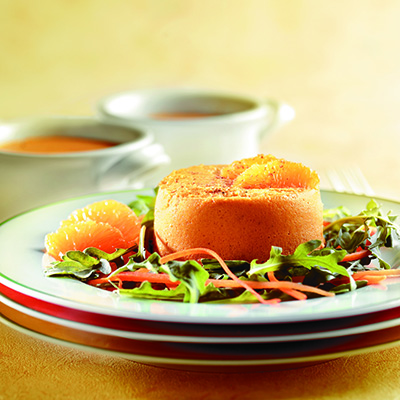- Strawberries
- Cook With Apples
- Grapes
- Grapefruit
- Lemons
- Cabbage
- Asparagus
- All About Bulb Vegetables
- All About Cruciferous Vegetables
- Squash
- All About Root Vegetables
- The Gift of Spice
- Thyme
- Basil
- Raspberries
- All About Tuber Vegetables
- Marjoram / Oregano
- Lemongrass / Citronella
- All Our Fruits, Vegetables and Fresh Herbs
- All About Exotic Fruits
- All About Legumes
- Cooking Pears: Three Inspirational Methods
Clementines
All About Clementines

Did you know that the clementine, like the tangerine, is a cross between a mandarin and a bitter orange?
It was created at the beginning of the 20th century in Algeria by a French missionary by the name of Clément Dozier—hence the name “clementine.”
Characteristics
The clementine is cultivated in abundance in Corsica, Spain, Italy, North Africa and Israel. Its skin is fine and reddish-orange in colour. Its flesh is juicy and slightly acidic.

Culinary tips and advice
- Choose a clementine that is heavy for its size, indicating that the fruit contains a lot of juice. Several varieties have a swollen and dented appearance, which is normal. A clementine, however, should not be soft.
- The clementine is great in a spinach salad, or used to flavour and decorate desserts.
- Add a distinctive taste to grilled foods with a clementine-flavoured pat of butter. You can make this by simply combining some pulp and a little rind with some softened butter.
- To eliminate unpleasant cooking odours, place clementine peels in the oven while it’s still warm.
Expert tip
Clementines can replace oranges in many recipes.
Availability
The peak period for clementines is October to March. They are especially plentiful in stores during the holidays.
Nutritional value
The clementine is an excellent source of vitamin A and provides folic acid and potassium. It is also a source of vitamin C.
Storage life
Clementines are very fragile and should be stored in a cool (not cold) place.


















